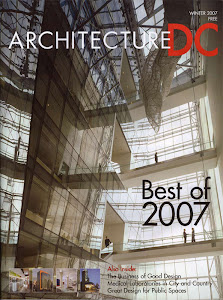



An Exclusive sneak peak at Dupont's New Cupcake Boutique, 'Hello Cupcake'
Starting this week, DC style aficionados will have a new treat to savor in Dupont Circle. The two chandeliers have been hung, the white carerra marble counters have been installed, the signs are ready to be hung, and there are just a few details here and there that need to be completed, as workers hurry to finish the newest modern hot spot in Dupont. Only this time it's not home furnishings or fashions that are served up in this hot new boutique, but rather cupcakes. That's right, those tasty treats you loved as a child are back, but this time with a heightened level of style and sophistication.
With the opening of Hello Cupcake, proprietor and head baker Penny Karas has brought together what she describes as 'two separate but interconnected ideas." First, as the bakery's motto suggest, this is 'a sophisticated twist on a an old-fashioned classic', meaning that all the ingredients are top quality, and in most cases organic and locally grown. Many of the inventive flavors are geared towards a sophisticated palette. And rather than the slathered on icing with sprinkles you grew up with, these cupcakes feature artistically piped icing with an array of carefully made confectioner toppers.
But the level of sophistication and modern style does not stop at the little cakes themselves, but is extended to the bakery's interior as well. As Karas suggests, this is "also a modern take on the concept of a bakery." The idea behind the interior of the bakery, designed by Karas' architect husband, Bill Bonstra of Bonstra Haresign Architects, is that the retail space read more as a boutique, such as small jewelry shop, than a bakery.
"Washington is ready," says Karas, who says that she has been watching what is happening in Washington with the emergence of more modern and forward thinking design amidst a vastness of traditionalism. Recently, areas throughout the city have seen a resurgence, in many ways brought about by the many new, more contemporary condominium and apartment buildings, which have attracted many new residents with a decidedly more modern aesthetic, to whom Karas expects her bakery will especially have a certain appeal. In fact Karas is quite familiar with the real estate market and the modern aesthetic, having spent a number of years in marketing, publicity, and real estate development. But baking, too, is in her blood, having spent many years growing up in her family's restaurant business.
It comes as no surprise then that Hello Cupcake is a family business as well, with her husband's primary contribution being that of the design. In fact Karas is quick to admit that her favorite part was "working with Bill and the way he was able to draw it out of my mind." She got to see his talent throughout the process, especially as he worked on the design of the millwork, drafting all the details by hand. And the outcome is a space that really captures Karas' concept. As Karas puts it, "It is a warm and inviting place".
Upon entering Hello Cupcake, guests will certainly take note of the contemporary design with allusions to this concept of 'sophisticated twists', which start with the pair of glass chandeliers, seemingly traditional elements, which have been both reinterpreted in colors from the bakery's branding palette and hung in a very anti-traditional, asymmetric arrangement. The white carerra marble counter stretches along one side of the shop, topping an expanse of molded pattered gypsum panels from ModularArts that resembles frosting. Karas calls attention to a favorite detail here, the turned down edge of the countertop, which her husband again and again asked Karas to consider and in the end finally convinced her was the proper detail. "He was right" Karas smiles. Overhead, four drywall panels, almost resembling piano keys, extend out from the side wall over the main counter area. And behind the counter, built-in millwork runs beneath a wall with a series of back-lit niches, which the baker can use to showcase various ingredients. Opposite, a chocolate brown wall will soon receive brightly colored 'sprinkles'. Four marble-top table with steel bases are paired with bent plywood chairs and a bar-height counter and stools provide the seating for this small but well-tailored space. Karas feels that the guests to her space will see the thought and care that was put into the design of the bakery and will understand that this is a reflection of the thought and care put into her products as well. She feels that the design of the space accentuates the little treats themselves, making them even more appealing.
In addition to the 14-16 flavors of cupcakes offered daily, Hello Cupcake will also serve a variety of beverages, featuring DC original M.E. Swing Coffees, 'Hint' water, and 'GuS' sodas (which stands for 'Grown Up Sodas', but which also has a sentimental draw for Karas, whose father was named Gus.) And keep an eye out cupcake decorating classes, as well as Lola's cupcakes: K-9 cupcakes named for the baker's pooch.
Hello Cupcake is located on the east side of Connecticut Avenue just south of Dupont Circle, and opens at the end of this week.
Read more!









